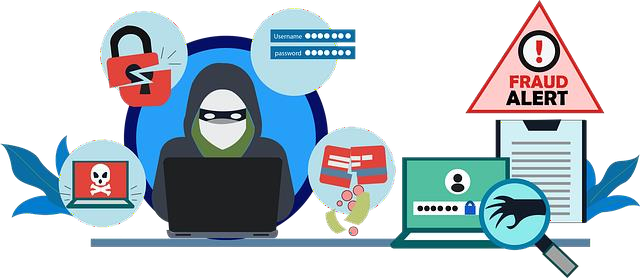
The Rise of AI-Powered Cyber Attacks: How to Stay Ahead of Hackers
Introduction
Artificial Intelligence (AI) is revolutionizing cybersecurity—not just for defenders. Hackers are now weaponizing AI to automate attacks, bypass security measures, and launch highly sophisticated phishing and deepfake scams.
According to a 2024 cybersecurity report, AI-powered cyber threats have increased by 70%, making it more challenging than ever to protect sensitive data. So, how can businesses and individuals defend themselves? Let’s break it down.
How Hackers Are Using AI for Cyber Attacks

1. AI-powered Phishing Attacks
Hackers now use AI-generated emails, messages, and even phone calls to trick victims. Unlike traditional phishing, AI-powered phishing is:
- More realistic – AI mimics real writing styles.
- More adaptive – AI changes tactics based on responses.
- More automated – Scammers launch thousands of attacks at once.
Real-Life Case:
In 2020, hackers used AI-generated voice deep fakes to impersonate a CEO, tricking an employee into wiring $35 million to a fake account.
How to Protect Yourself:
- Use AI-driven email security tools like Microsoft Defender and Proofpoint.
- Train employees to recognize AI-generated phishing patterns.
2. Deep Fake Scams & Identity Theft
AI enables cybercriminals to create highly realistic deepfake videos and voices to manipulate people.
Hackers use AI to:
- Bypass biometric security (fingerprint, facial recognition).
- Impersonate executives or government officials.
- Create fake videos to spread misinformation.
Real-Life Case:
In 2019, the CEO of a UK-based energy firm fell victim to a deepfake scam. Hackers used AI-generated voice technology to impersonate the firm’s parent company executive in Germany.
How to Stay Safe:
- Enable Multi-Factor Authentication (MFA) for logins.
- Verify video calls and voice messages before taking action.
3. AI-powered Malware & Ransomware
Read Also: Unveiling Ransomware Attacks: What You Need To Know
Hackers now use AI to create malware that:
- Mutates in real time to avoid detection.
- Uses AI-driven automation to spread faster.
- Exploits vulnerabilities before they’re patched.
Real-Life Case:
The DarkSide ransomware group used AI-powered malware to shut down the Colonial Pipeline, causing fuel shortages across the U.S. in 2021.
How to Protect Your Business:
- Use AI-based cybersecurity tools like CrowdStrike and Darktrace.
- Regularly update security patches to prevent zero-day exploits.
How AI is Defending Against Cyber Threats

Security experts are now using AI-driven cybersecurity to fight back. Here’s how AI-based threat Detection can analyse patterns to detect real-time threats.
- Automated Incident Response: AI stops attacks before they escalate.
- Behavioral Analysis: AI flags unusual activity to prevent breaches.
Best Practices for Staying Ahead:
- Invest in AI-powered security tools like IBM Watson for Cybersecurity.
- Conduct regular cybersecurity training for employees.
The Future of AI in Cybersecurity

AI is changing cybersecurity on both sides—for hackers and defenders. So, who will win? Experts predict that by 2026, AI-powered attacks will be so advanced that traditional security measures alone won’t be enough. That’s why companies must invest in AI-driven cybersecurity now to stay ahead.
💬 What do you think? Will AI be our greatest defense or our biggest risk? Drop your thoughts below!
❓ FAQs
Q: How can I tell if an email is a phishing attempt?
Hackers use AI to create highly convincing phishing emails. Look for:
✔ Urgent language (e.g., “Your account will be locked in 24 hours!”)
✔ Misspelled sender email addresses
✔ Unexpected attachments or links
✔ Use AI-powered phishing detection tools like Proofpoint.
Q: I keep getting hacked despite using strong passwords. What should I do?
The real issue might be password reuse, weak recovery questions, or lack of MFA.
✔ Enable Multi-Factor Authentication (MFA).
✔ Use a password manager to generate strong passwords.
✔ Avoid biometric-only security—deep fakes can bypass it!
Q: I want to secure my small business from AI-driven cyber threats. Where do I start?
AI-powered malware and phishing are major threats to small businesses. Security Checklist for Small Businesses:
✔ Update software regularly to prevent AI-exploited vulnerabilities.
✔ Invest in AI-driven cybersecurity tools like CrowdStrike.
✔ Train employees to recognize AI-generated scams.
Q: I want to learn ethical hacking to improve my cybersecurity skills. What’s my first step?
Read Also: Building Your Career: In-Demand Cybersecurity Skills to Learn Now
AI-powered attacks require AI-driven defense strategies. How to Get Started:
✔ Learn AI-driven security tools (e.g., SIEM, SOC analytics).
✔ Practice detecting AI-powered phishing and malware.
✔ Get certified in ethical hacking (e.g., CEH, OSCP).